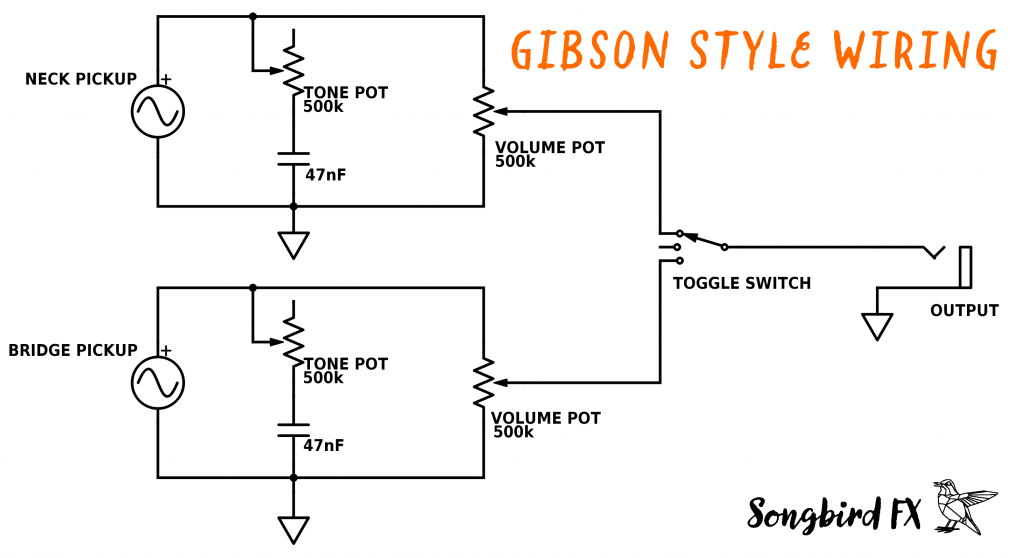Gibson style guitars usually have two humbucking pickups, a tone and a volume potentiometer for each humbucker and a toggle switch to select the pickup. How exactly are these components wired together and how do the pot settings affect your sound? In this little article I will give you an answer to these questions and tell you some advantages and disadvantages of this wiring scheme. I will also show you the frequency response of the different settings.
Wiring Scheme

In the diagram you can see that each pickup has independent tone and volume controls. The obvious advantage of this wiring scheme is that you can set two independent sounds and easily switch between them via the toggle switch.
Example Settings:
- Classic Rock
Neck pickup: Volume 100%, Tone 0% (creamy lead sound)
Bridge pickup: Volume 70%, Tone 100% (crunchy rhythm sound)
This is a typical classic rock guitar setting where you can switch between lead and rhythm sound. - Kill Switch
Neck pickup: Volume 0%, Tone 100% (short circuit – no output)
Bridge pickup: Volume 100%, Tone 100% (high output lead or rhythm sound)
This setting can be used as a special effect instead of a kill switch: Quickly move the toggle switch up and down to create a tremolo-like effect.
One disadvantage of independent volume control is that the mix position of the toggle switch is only useful, if you match the volume settings of both pickups. If you don‘t, one pickup outweighs the other and you can‘t hear much of a difference to the single pickup sound.
Another disadvantage of passive volume control in general is that at lower volume settings the output impedance is very high -> Your signal is more sensitive to electromagnetic disturbances and gets noisier. You don’t have this problem with active guitar pickups.
Frequency Response
I simulated the frequency response of different settings with LTspice XVII. The signal source I used has a flat frequency response and a 10k output resistance.


Conclusions:
- The tone control is an adjustable lowpass filter
- The tone setting does not change at different volume settings (the cut-off frequency stays the same)
- Significant tone change only happens between 0%-10% of the tone pot value -> I recommend using audio taper potentiometers to compensate this unlinearity
I hope this article is useful to you. Please check out the products on this website: My company Songbird FX is a manufacturer of high-quality micro-USB rechargeable guitar pedals.